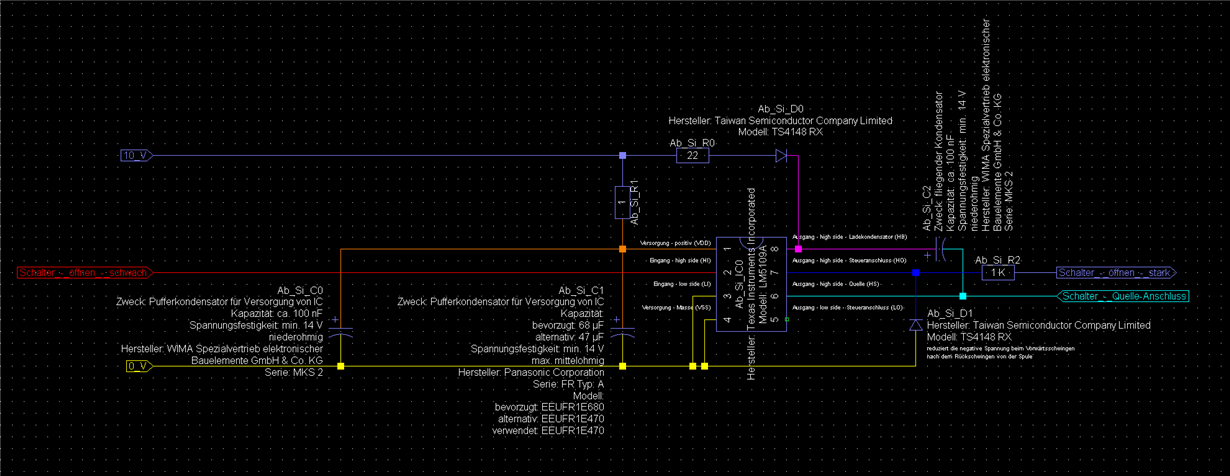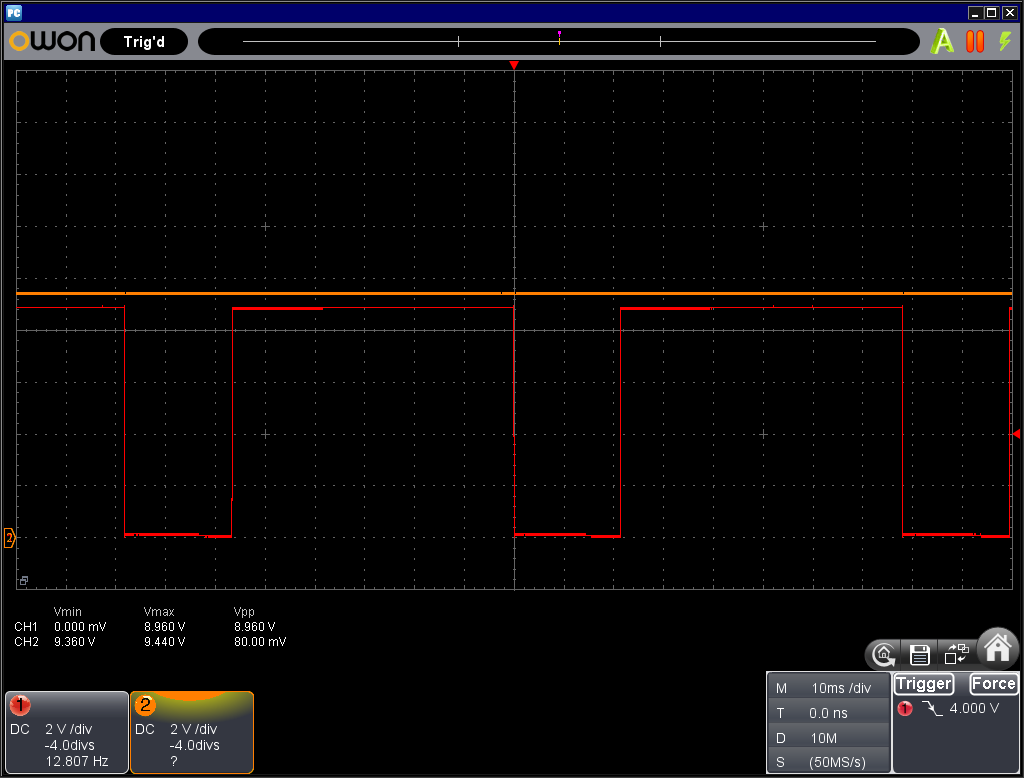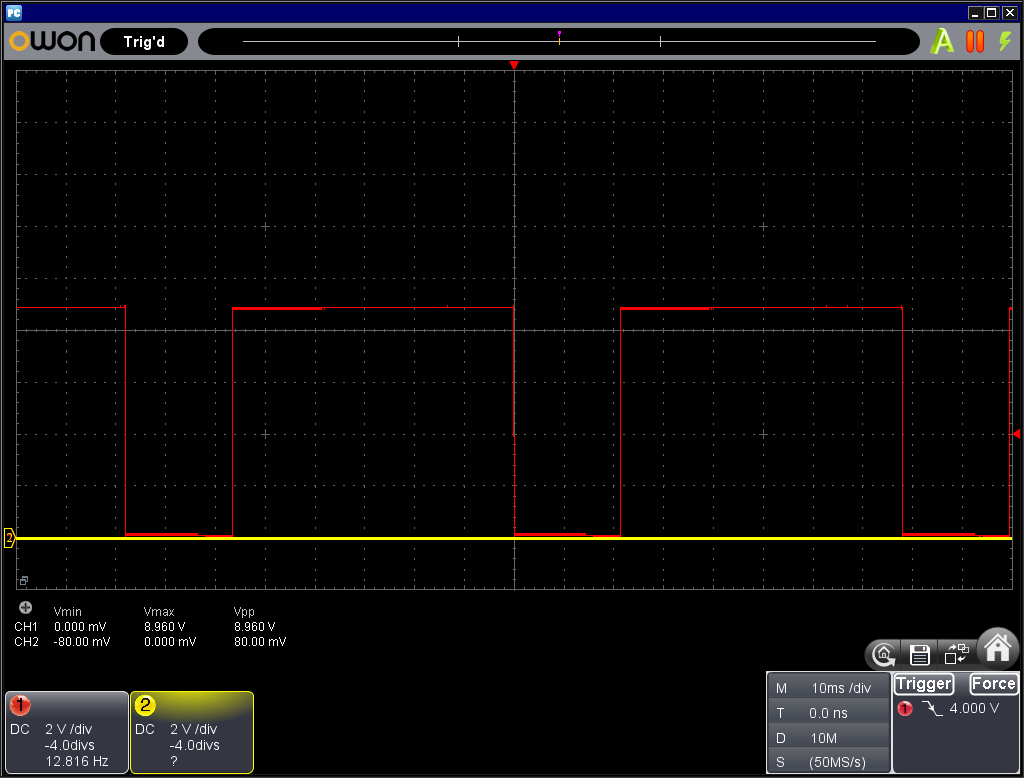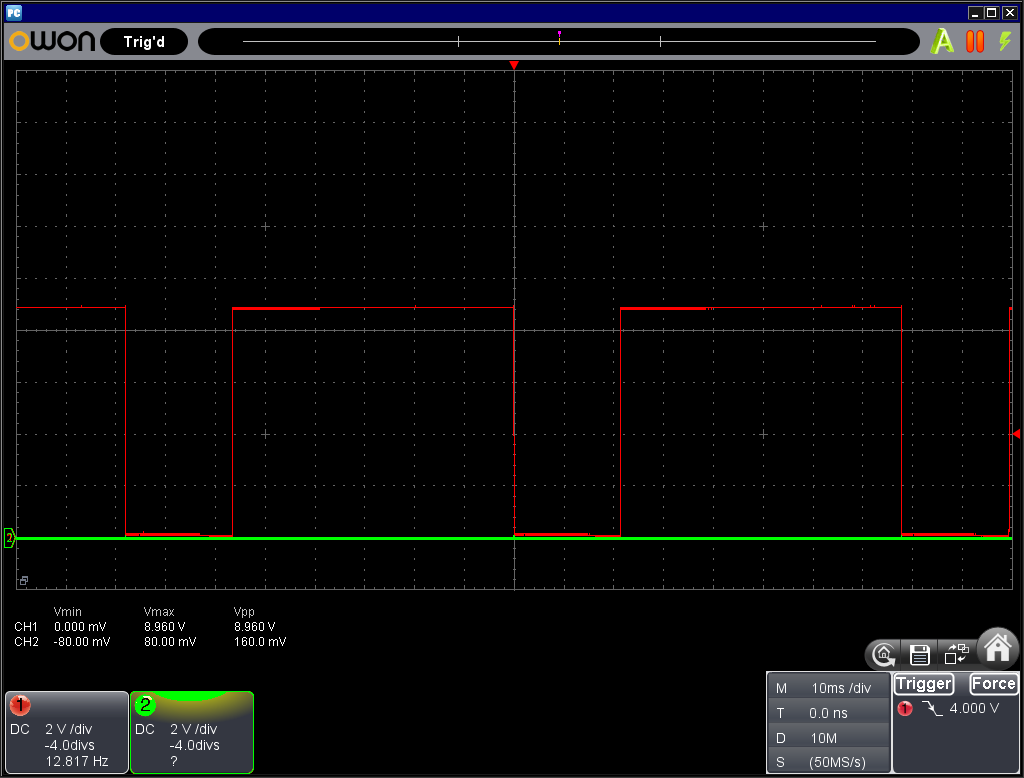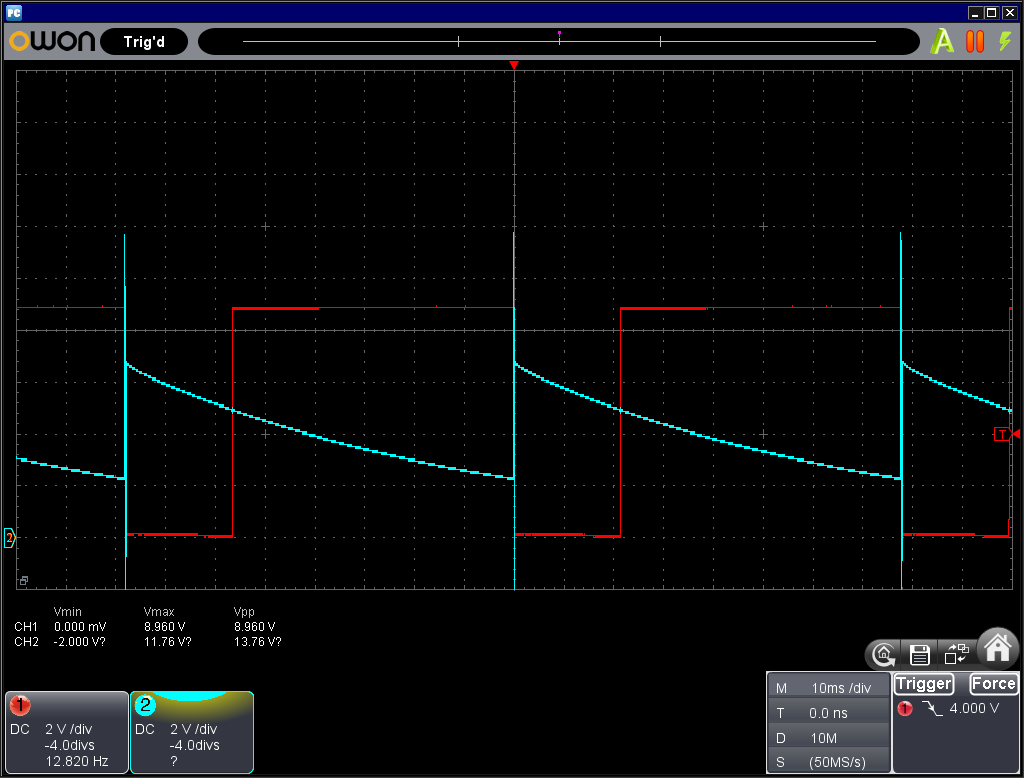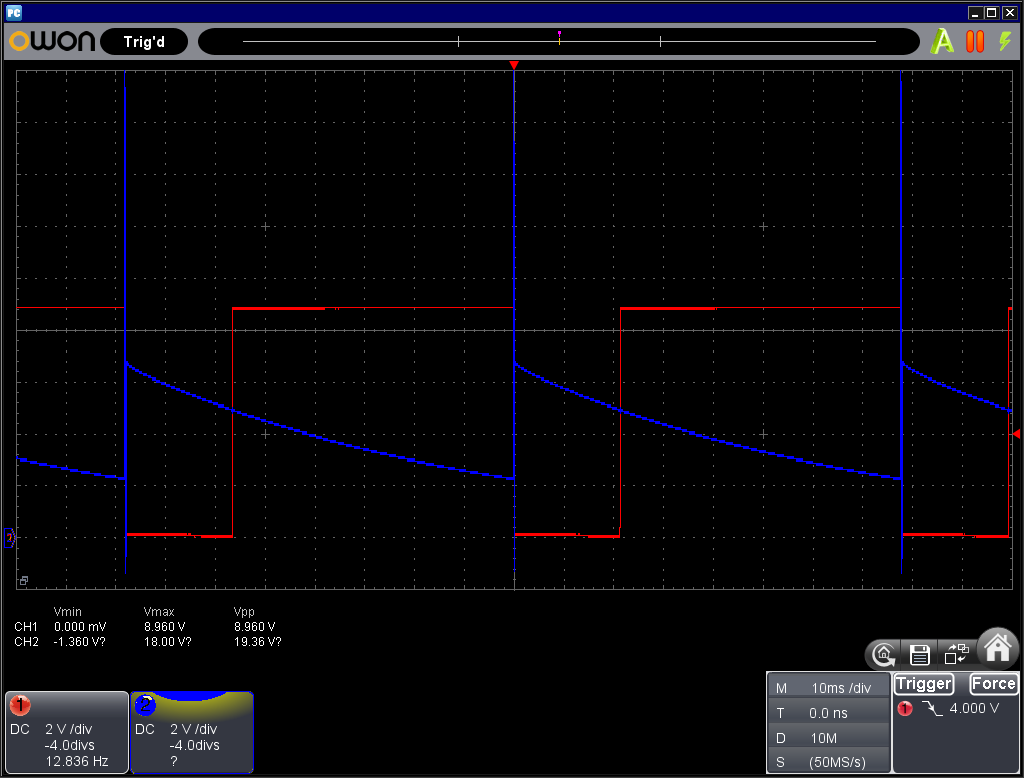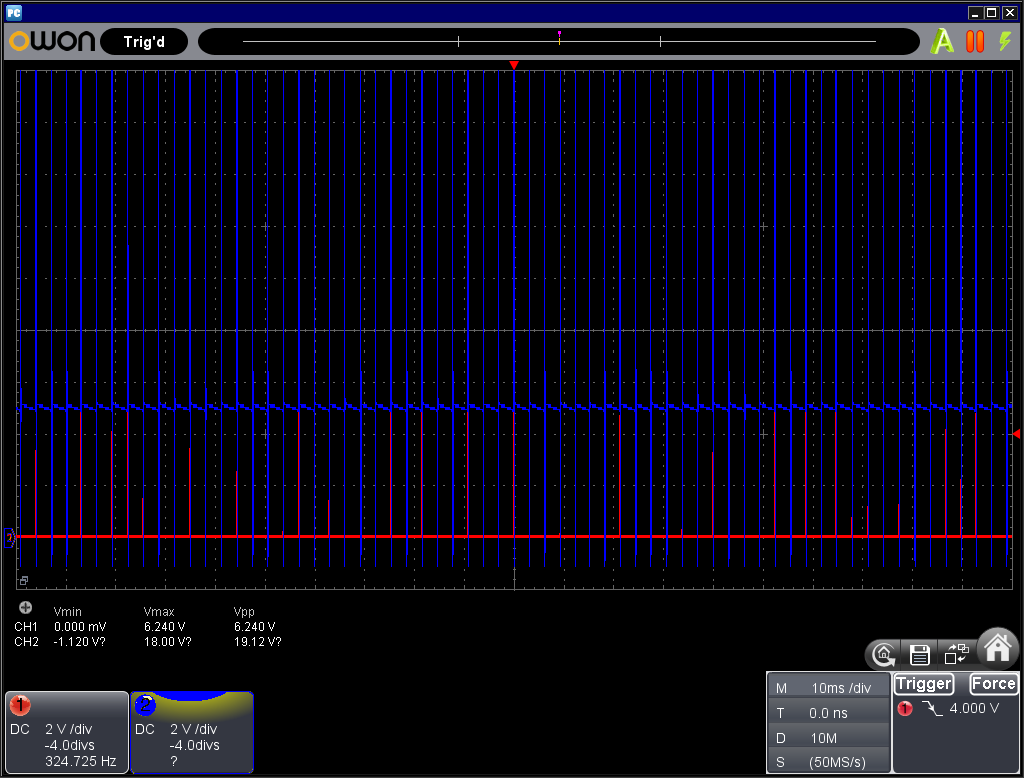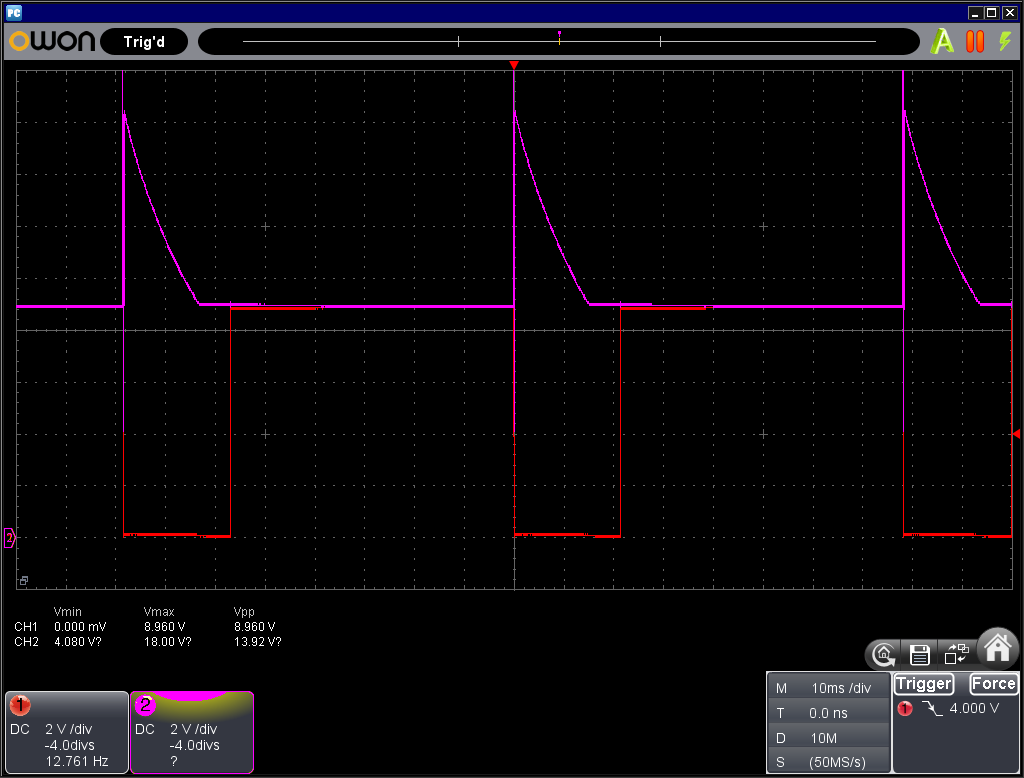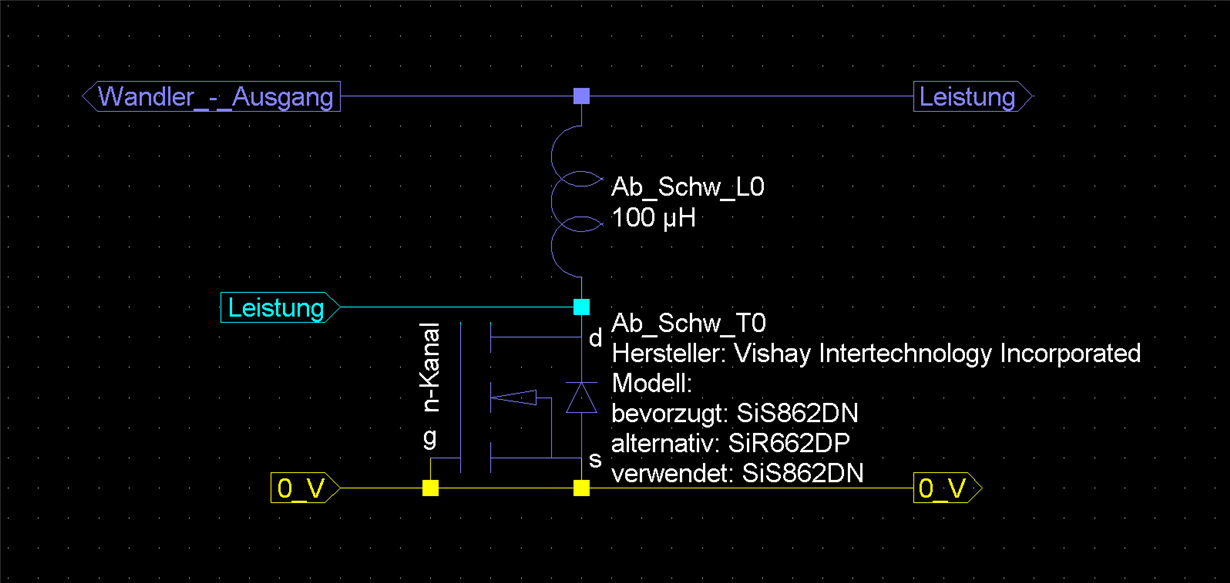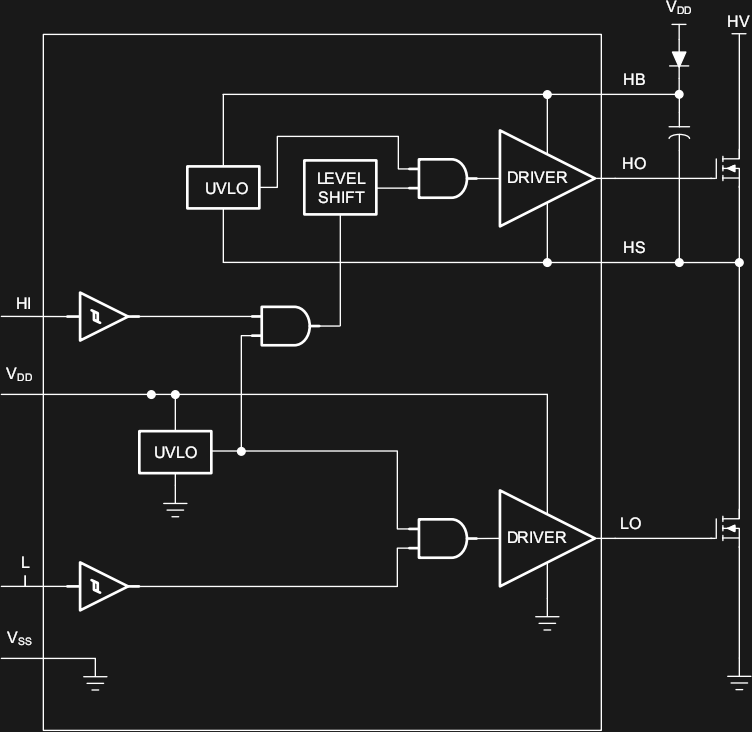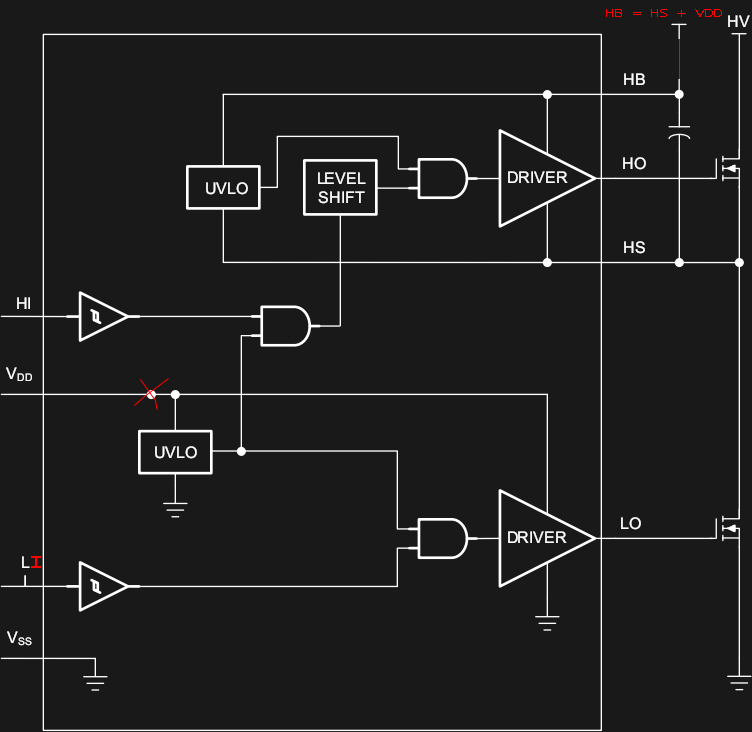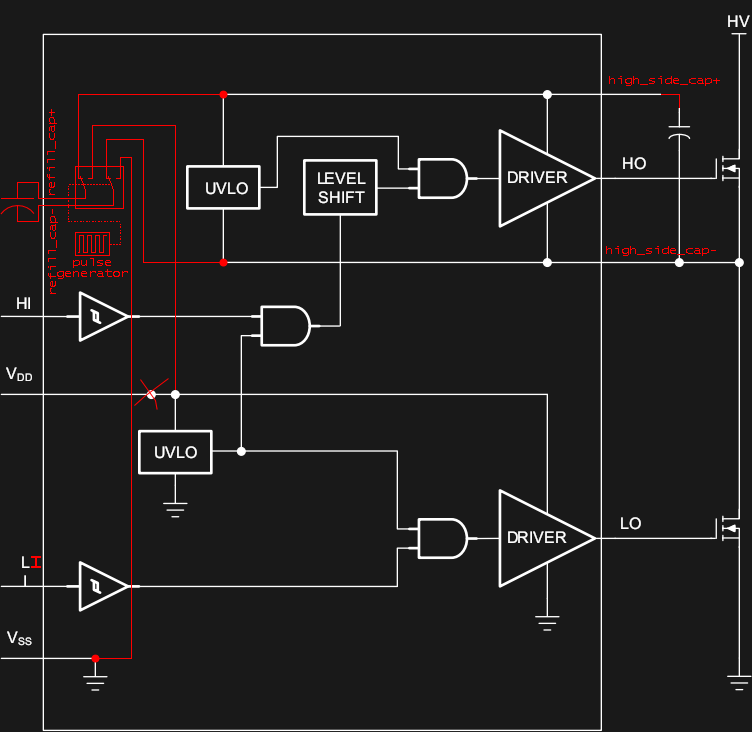Hello community,
I am using the LM5109A in a step down converter. I experienced a situation where the LM5109A is not switching within tens of nanoseconds as it should but takes more than 20 milliseconds to do so.
To trigger this fault I need to unclamp all load of the converter so it gets nearly no "high"-signal at the input "HI" (maybe 1 per 3 seconds because leakage in the output capacitors of the converter (they aren't included in the wiring diagram)). Then I clamp a small load (150 ohms). This causes the fault. If I then increase the load to let's say 10 ohms then the fault goes away again. Then I can go back to a small load (150 ohms) without causing the fault.
If I unclamp all load and then clamp a big load (10 ohms) then there is no fault either.
I measured all pins of the LM5109A and uploaded the diagrams together with a wiring diagram as images. I hope this helps in finding the problem and a solution.
Thank you for helping.
wiring diagram:
pin 1 in the fault-state:
pin 3 and 4 in the fault-state:
pin 5 in the fault-state:
pin 6 in the fault-state:
pin 7 in the fault-state - 10 ms/div:
pin 7 in the fault-state - 50 µs/div:
pin 7 in a non-fault-state - 10 ms/div - also 150 ohms at the output:
pin 7 in a non-fault-state - 50 µs/div:
pin 8 in the fault-state - 10 ms/div:
pin 8 in the fault-state - 50 µs/div:
I don't know whether it helps in understanding: The DC/DC converter has a bang–bang controller. This means it
- opens the switch to refill the output capacitors if the output voltage is below a certain value and
- closes the switch if the output voltage is above a certain value.


